Introduction
Autism Spectrum Disorder (ASD) poses unique challenges and strengths for individuals, affecting learning, communication, and social interactions. In order to navigate the complexities of ASD, a comprehensive evaluation is crucial. The Spectrum Test, adhering to standardized criteria, plays a pivotal role in identifying ASD.
However, it is important to note that this evaluation is just one part of the diagnostic journey, which may involve referrals to specialists for further analysis. As research advances, new technologies such as digital screening tools and telehealth platforms are emerging to revolutionize the way ASD is identified and managed. Accurate diagnosis of ASD is not only essential for personal well-being but also holds economic implications, as businesses that embrace neurodiverse employment tend to outperform their competitors financially.
Understanding the Spectrum Test and its results is a vital step for parents in advocating for their child's needs and accessing tailored support. By building a supportive community and promoting self-advocacy skills, parents can ensure the well-being and integration of their children with ASD. Through these efforts, we contribute to the evolving landscape of autism services, research, and advocacy, enhancing the quality of life for individuals on the spectrum and positively impacting society as a whole.
Understanding the Spectrum Test for Autism
Autism Spectrum Disorder (ASD) manifests uniquely across individuals, presenting a diverse range of challenges and strengths. This neurological and developmental condition affects learning, communication, and social interactions to varying degrees. A cornerstone of identifying ASD lies in the comprehensive evaluations such as the Spectrum Test, which adheres to the standardized criteria set forth by the American Psychiatric Association's Diagnostic and Statistical Manual, Fifth Edition (DSM-5). This test integrates both the caregiver's insights on the child's development and the professional's behavioral observations to form a holistic view of the individual's needs.
While no single tool can solely determine an ASD diagnosis, the Spectrum Test contributes valuable information to the diagnostic process. It's important for those involved to understand that this assessment is a part of a larger diagnostic journey, which may include referrals to specialists for further analysis. As research advances, the potential for new technologies to assist in early detection and diagnosis grows, with initiatives to develop digital screening tools and telehealth platforms that could revolutionize the way ASD is identified and managed.
The relevance of accurate ASD diagnosis extends beyond personal well-being; it has economic implications as well. Studies have demonstrated that businesses that embrace neurodiverse employment, including individuals with ASD, tend to outperform competitors financially. This inclusion can contribute to economic growth, with projections suggesting a significant boost to national GDP from increased workforce participation by individuals with disabilities.
For adults who may have navigated life without an ASD diagnosis, understanding the Spectrum Test and its role in recognizing ASD is a step towards gaining clarity and accessing tailored support. It's a testament to the changing landscape of services, research, and advocacy for individuals on the spectrum, which aims to improve the quality of life and make a positive contribution to society as a whole.
Preparing for the Spectrum Test
Embarking on the autism testing journey requires a thoughtful and methodical approach. To start a thorough assessment, it is essential to gather a comprehensive developmental history of the individual, including important milestones and any observed concerns throughout their lifetime. Accumulating this information alongside pertinent medical and educational records creates a robust foundation for the assessment. During the evaluation process, it's equally important to ensure the individual is comfortable and prepared for what to expect. Such meticulous preparation emphasizes the significance of a collaborative effort between caregivers and professionals, aiming for the most accurate depiction of the individual's unique abilities and challenges.
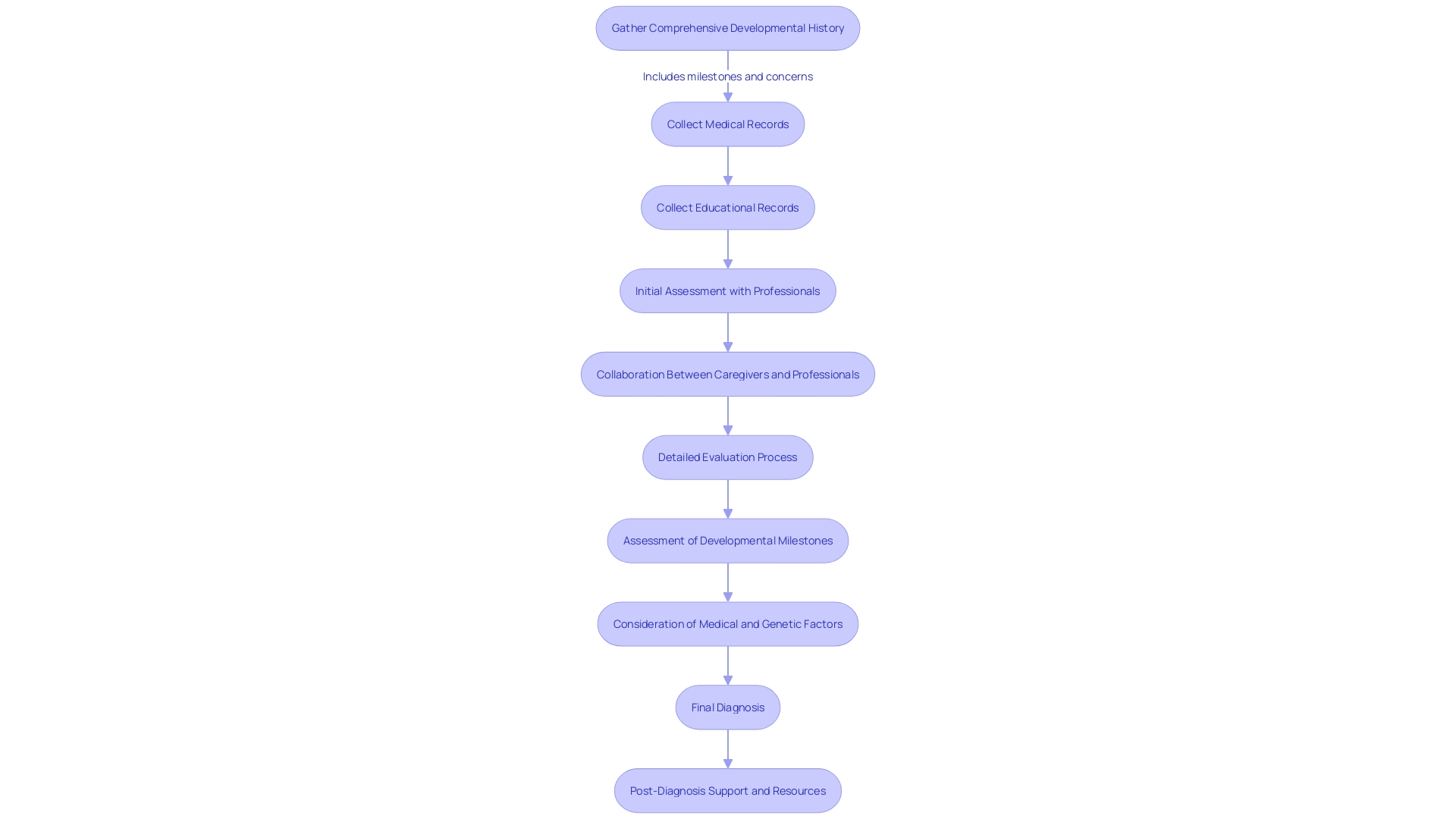
Supporting Your Child During the Spectrum Test
'Autism testing is a delicate process requiring a compassionate approach to ensure individuals in their early years feel secure and understood.'. David R. Offord, a prominent psychiatrist specializing in children, emphasized the significance of lowering stress and promoting fair involvement in all aspects of life for individuals with disabilities, including autism. To reduce the anxiety linked to the Spectrum Test, it's crucial to clarify the purpose of the evaluation using language that connects with the individual being assessed. Incorporating relaxation techniques and creating a reassuring environment can significantly contribute to the comfort of a young person. Settings like Cork University Hospital's radiology department have successfully implemented autism-friendly initiatives, resulting in more efficient and less stressful imaging studies. These practices emphasize the significance of dealing with the distinct sensory processing challenges that children with autism experience, as emphasized by the National Autistic Society. By taking cues from educational approaches like TEACCH, which advocates for consistency and visual learning aids, parents can transform the testing environment into a supportive space. Moreover, comprehending and handling related circumstances, like anxiety, which can greatly impact children with autism, is essential. A review of studies on children with autism's experiences with anxiety reveals the extensive impact it has on their daily lives, emphasizing the need for thoughtful support during testing. With the right strategies in place, caregivers can help reduce anxiety and ensure that the Spectrum Test accurately reflects the individual's abilities and needs.
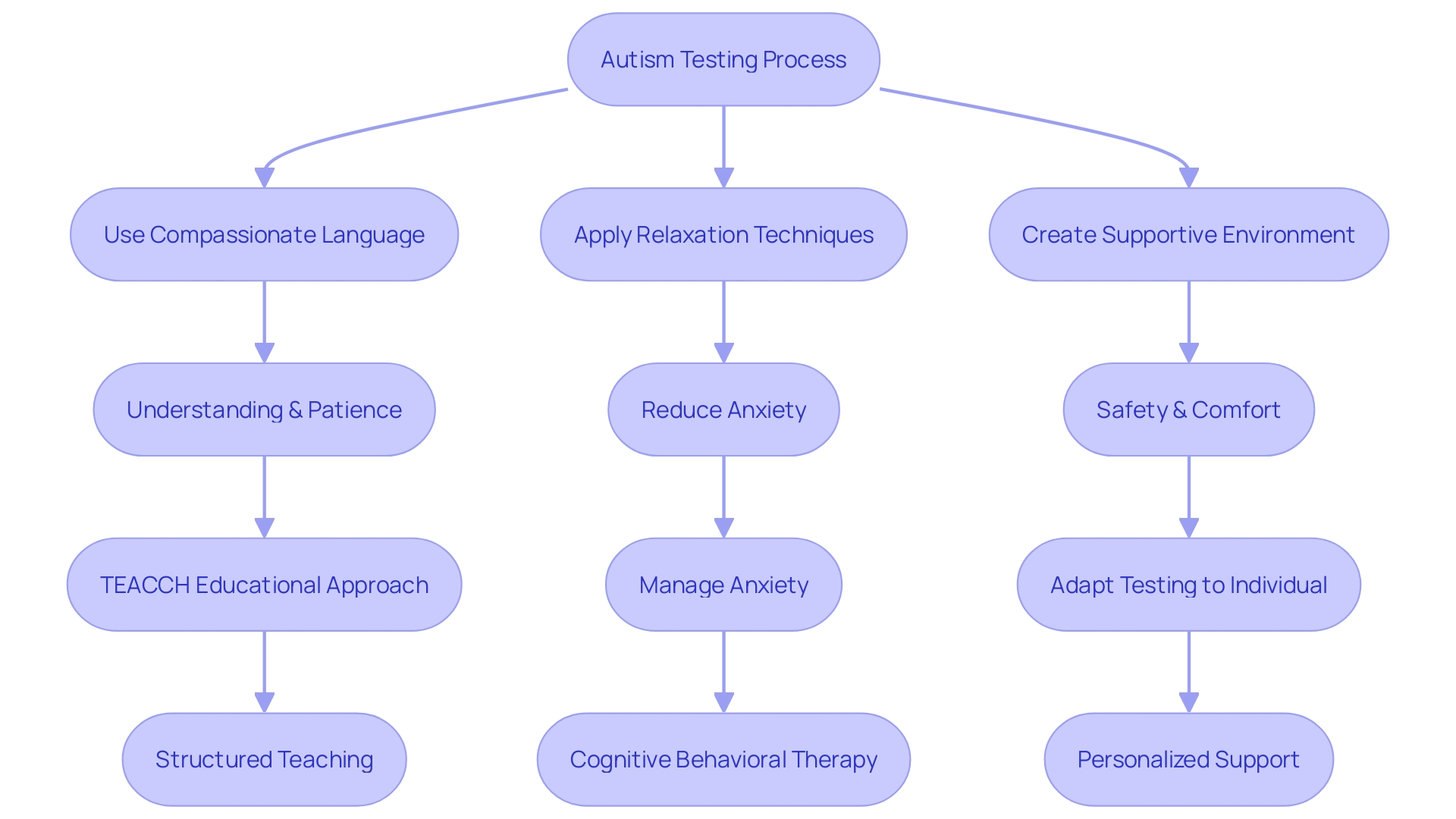
Understanding the Spectrum Test Results
Upon completing the autism spectrum assessment, individuals will have access to vital data regarding their child's developmental health. It's important to understand that an official diagnosis isn't mandatory for identifying as autistic, as self-diagnosis is broadly accepted within the autistic and neurodivergent community. However, if an official diagnosis is pursued, interpreting the results becomes crucial. The results should be viewed through the lens of the diagnostic criteria detailed in the DSM-5. This comprehension can empower caregivers to customize intervention and assistance strategies effectively.
Autism spectrum disorder (ASD) manifests in a variety of ways, affecting learning, communication, and social interaction. Its symptoms and severity differ widely, with some individuals navigating life independently and others requiring significant support. Brain scans have revealed that individuals with autism have noticeable differences in brain structure when compared to neurotypical development, although the exact cause of autism remains under investigation. No single factor has been pinpointed, but research is ongoing into genetic and hereditary links.
Statistics corroborate that while multiple diagnostic tools for ASD exist, reliance on a single tool is discouraged. Instead, a combination of parental or caregiver observations and professional evaluations is recommended for a comprehensive understanding of the individual's behaviors and needs. With such understanding, parent advocates can make informed choices, guaranteeing their offspring obtains the essential assistance to flourish.
Advocating for Your Child Based on the Spectrum Test Results
As a foundation of advocacy, parents who advocate must navigate intricate systems to guarantee that their children with autism receive the essential aid and interventions. By fully engaging with the complexities of assistance services, they become crucial individuals in their offspring's growth and inclusion in academic environments.
Strategies for effective advocacy often begin with the challenging task of communication with healthcare and educational professionals. Just as a parent in Chiba, Japan, questioned the absence of genetic testing, advocates must be tenacious in seeking out the best for their offspring, despite encountering outdated attitudes or systemic barriers. The stories of parents battling for ABA-based support in the UK and Mr. Harris's campaign for picture boards in Peterborough exemplify the transformative impact of informed and persistent advocacy.
Understanding the available resources, such as the TEACCH program, which harnesses the strengths of visual learning and consistency, can greatly enhance an individual's academic and social outcomes. Moreover, recognizing the importance of a parenting style that balances warmth with structure is key to supporting neurodivergent children effectively.
Navigating the healthcare and education systems requires parents to be well-informed about the latest guidelines and standards, as exemplified by the Assessing Fitness to Drive updates and their varied interpretations across regions. Similarly, staying updated on the changing landscape of services for individuals with ASD, including the increase in interest in ABA therapy from private equity firms, provides advocates with the knowledge to make informed decisions.
In accordance with the wisdom of Maya Angelou, as advocates gain more knowledge, they must also improve, adjusting their approaches to the developing scientific comprehension and societal changes related to individuals on the autism spectrum. The ultimate goal is to ensure that every autistic child can engage peacefully and supportively in school, home, and leisure activities, contributing their unique strengths to the community.
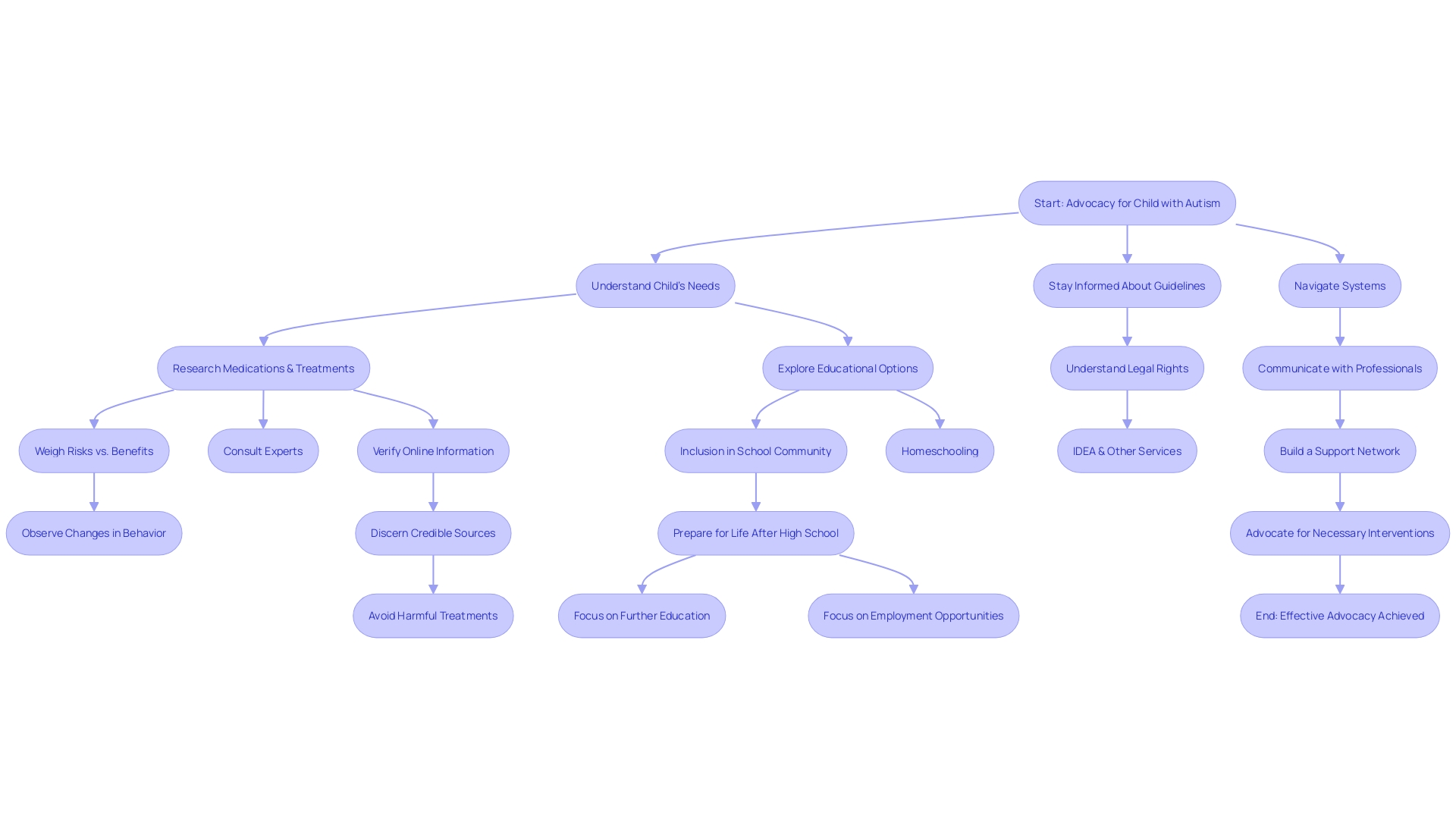
Building a Supportive Community for Your Child with ASD
Establishing a network of assistance within the community is crucial for individuals navigating the intricacies of autism spectrum disorder (ASD). It involves connecting with other parents, engaging with assistance groups, and tapping into available resources and services that can provide a sense of solidarity and shared understanding. Such a network can be a source of comfort and valuable insights, communicating the powerful message that no one is walking this path alone.
Dr. Dan R. Offord, a renowned psychiatrist specializing in children, emphasized the significance of well-supported participation of individuals with disabilities in various life domains as a key determinant of mental health and equity. The emotions from a study including 41 individuals with autism, 50 parents of individuals with autism, and 31 advocates from New Zealand and Australia echo this conviction, emphasizing the need for goals that affirm neurodiversity. These goals promote the utilization of the strengths and interests of children with autism without trying to alter them and require adjustments in the environment and attitudes of the supporting adults to cultivate satisfying lives for these children.
The stories from the survey and the viewpoints of professionals like Gregory Wallace, PhD, underscore the essential requirement for investigation and assistance that target the entire life cycle of individuals with autism, especially grown-ups, for whom information and aid are notably inadequate. These insights guide us toward shaping community support structures that not only address immediate needs but also anticipate the evolving challenges across different life stages.
In our interconnected world, the social fabric we weave is strengthened by the diversity and inclusivity of its members. Projects, such as the one inviting participation with filmmakers and digital creators, and the establishment of steering groups in Dublin, showcase the community's proactive steps toward a more inclusive society. The search for providers to run new special schools, like the one in Royal Greenwich, is a testament to the commitment to creating supportive educational environments.
By nurturing a society that acknowledges the strengths and requirements of children on the autism spectrum, we enhance their psychological well-being and the overall welfare of our community. A community that is informed, empathetic, and actively engaged in supporting each other can transform the lives of individuals with autism and their families, allowing them to thrive in all domains of life.
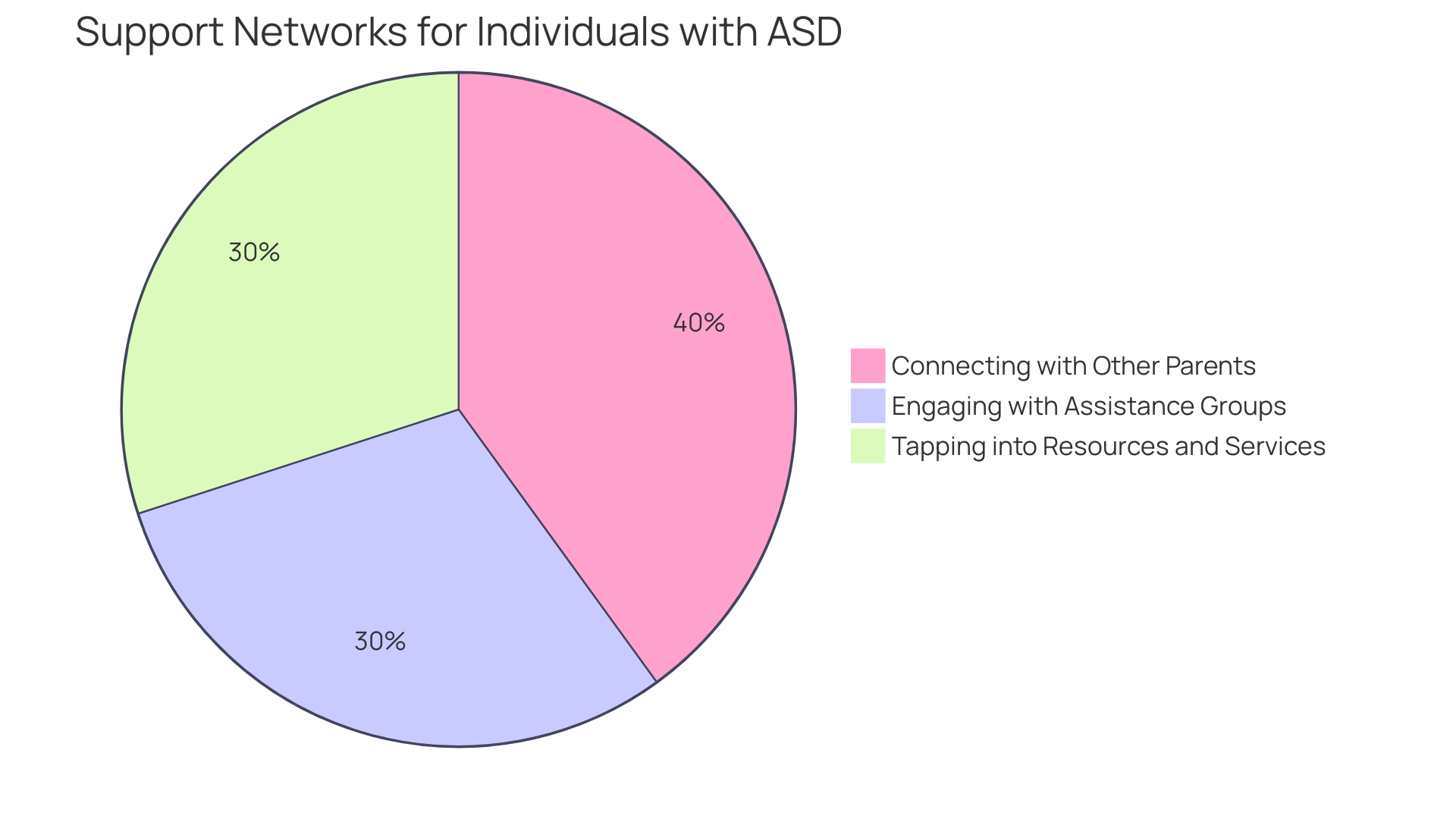
Promoting Self-Advocacy Skills in Children with ASD
Fostering self-advocacy skills in individuals on the autism spectrum is crucial for promoting their mental well-being and inclusion in society. It involves recognizing their unique strengths and challenges, mitigating chronic stress, and ensuring that their caregivers have the necessary resources for supporting healthy development. Autistic individuals, who often face emotional and behavioral challenges, are at risk of being marginalized from social participation in educational and community settings. Hence, fostering self-advocacy is essential to empower them to engage in various life domains confidently and independently.
Providing young individuals with communication and social skills and promoting autonomy are crucial tactics for self-advocacy. It requires a neurodiversity-affirming approach that emphasizes the individual's interests and refrains from trying to change them. Instead, it focuses on adapting the support provided by adults and the environment. Such an approach is echoed by a survey of individuals with autism spectrum disorder, parents, and supporters, who highlighted the importance of goals that enable individuals on the autism spectrum to lead fulfilling lives without being compelled to conform to norms that do not align with their needs or desires.
Interventions created for individuals with autism often receive criticism for their flawed research designs, which obscure their effectiveness and expected outcomes. This indicates the need for careful observation and positive framing when discussing challenges and new diagnoses with children. For instance, when addressing reading difficulties, one might say, "I've noticed you sometimes struggle with reading. Can we talk about ways to make it easier for you?" This approach respects individual learning styles and uses age-appropriate language to explain new diagnoses, such as "Some brains learn a little differently than others, which sometimes makes it hard to learn new things."
The efforts of the federal advisory committee IACC to enhance the identification and diagnosis of the condition aim to reduce disparities in early detection and access to services, recognizing the long-term impact of such disparities on the availability and quality of services throughout one's life. The committee also seeks to uncover the roles of brain development, cognition, and physiological function in the condition in order to develop targeted interventions and societal accommodations that promote positive outcomes. These aspirations align with the views of the autism community, including the Autistic Self Advocacy Network (ASAN), which advocates for policies and research to understand the biology underlying autism and its co-occurring conditions.
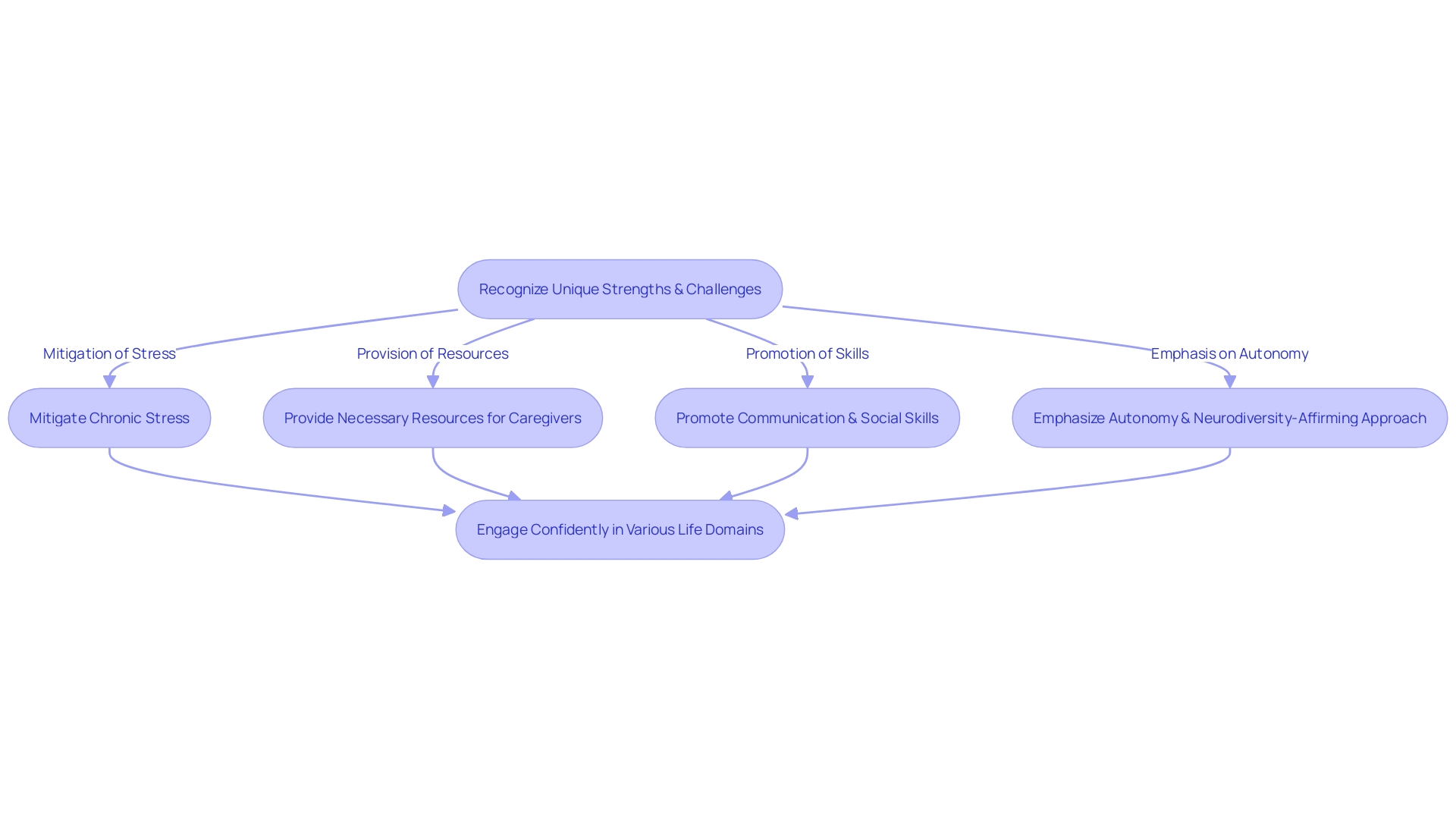
Conclusion
In conclusion, understanding the Spectrum Test is crucial for parents advocating for their child with Autism Spectrum Disorder (ASD). It provides valuable information to form a comprehensive understanding of the child's needs. New technologies like digital screening tools and telehealth platforms are revolutionizing ASD identification and management.
Accurate ASD diagnosis is essential for personal well-being and has economic implications. Embracing neurodiverse employment benefits businesses financially, highlighting the importance of inclusion.
Effective advocacy involves navigating complex systems, communicating with professionals, and staying informed about guidelines and resources. Building a supportive community provides solidarity for families navigating ASD.
Promoting self-advocacy skills empowers children with ASD to engage confidently in various life domains. Recognizing their strengths and challenges and promoting autonomy is key.
Understanding the Spectrum Test, building a supportive community, and promoting self-advocacy skills ensure the well-being and integration of children with ASD. These efforts enhance autism services, research, and advocacy, positively impacting individuals on the spectrum and society as a whole.




